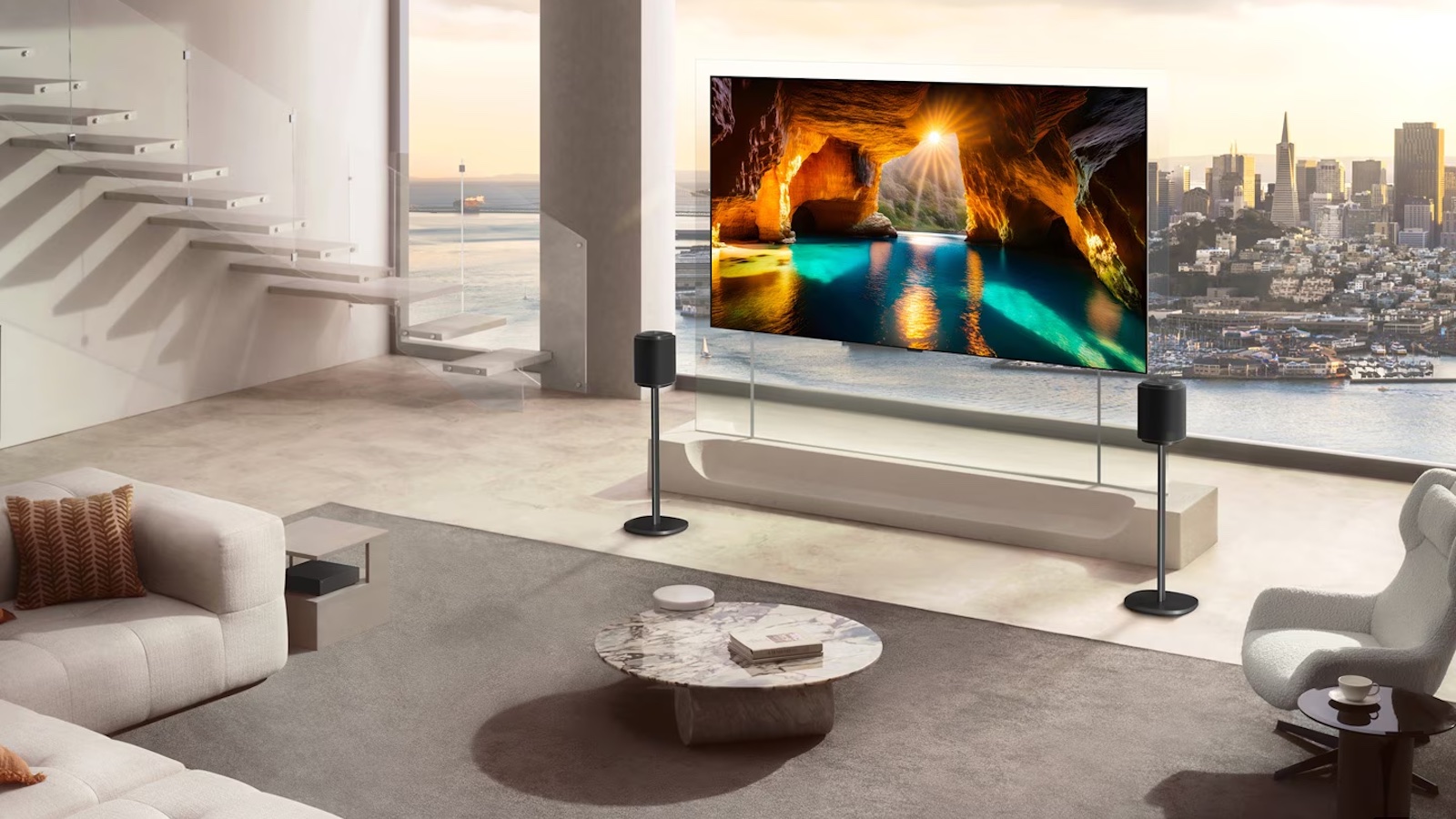What Hi-Fi? Verdict
A quite stunning projector that delivers one of the sharpest and most insightful pictures we’ve seen
Pros
- +
Breathtakingly sharp picture
- +
Excellent motion handling
- +
Exceptional HD upscaling
Cons
- -
Black depth not convincing
- -
Short on dark detail
Why you can trust What Hi-Fi?
For native 4K projectors, the devil is rarely in the detail. The Sony VPL-VW890ES, and top-end machines like it, specialise in transcribing every crumb of picture resolution from source to screen.
Of Sony’s native 4K projector range, the VW890ES is only second to the top model which itself is angled more towards use in well-lit spaces. If you’re after the cream of the crop for standard home cinema use, then this Sony could well be it.
In the past, however, we’ve found this level in the Sony projector series a little wanting – stunning for detail and colour but a little less skillful with blacks than customers at this premium end of the market deserve. After all, we're talking about a projector that costs £24,999 in the UK, AU$38,999 in Australia, and, under the 'Sony VPL-VW1025ES' moniker, $40,000 in the US. But now such models have been fitted with a new processor and more developed dynamic HDR abilities, has Sony perfected the performance?
Thanks to their precision-crafted lenses and trio of 4096 x 2160 resolution SXRD projector panels, throwing images across your room and up to a glorious size of 300-inch – all without losing so much as a hair of detail – is what they do best, but a great picture is about more than just fine-grain information. SXRD is Sony’s version of the liquid crystal on silicon technology (LCoS) that is many ways a sweet spot between LCD and DLP alternatives.
Build

Installing a projector of this level is, of course, no small consideration. Considering the Sony measures 22 x 56 x 50cm, its positioning relative to your screen should be part of the main spec of the room. If you’re not designing a home cinema from scratch or replacing a pre-existing machine, then there’s a good chance you’ll have to re-think your current furniture configuration at the very least.
Like all of Sony’s SXRD projectors, it’s both rack- and ceiling-mountable. Check that your bracket and plasterwork can cope with it and do bear in mind that it’s a much larger device than either of the lower-end models from Sony. The more affordable VPL-VW290ES and VPL-VW590ES are 14kg. At 22kg, the VW890ES is an altogether grander proposition.
Naturally, the huge ARC-F all-glass lens is what draws the eyes from the front, but there are some on-body controls on the right side and the all-important sockets on the left. The VW890ES is fitted with two HDMI inputs rated for 4K HDR content at up to 60Hz. There are also USB and Ethernet ports for service and updates. If you do wish to start adding streamed content, your best way to get this device online is with a media streamer plugged into one of the HDMIs.
The latest hi-fi, home cinema and tech news, reviews, buying advice and deals, direct to your inbox.
Once the house lights are down low, you’ll need the remote control. It’s the standard long and fully-featured device that has accompanied all Sony SXRD projectors for quite some time now. You really couldn’t want for more in the way of quick access to all the settings, menus and feature controls.
It’s also backlit – a must at this price, of course. That said, one of the few tweaks we’d like to see is for motion to activate the backlight instead of having to press the button at the top each time. It’s not always easy to find in the dark.
Features

What separates the VW890ES from Sony’s lower-end models are its light source and lens. Like the VPL-VW790ES, which is slightly lower in the range, it uses the company’s Z-Phosphor laser diode for the light stream. The entry-level VW290ES and VW590ES have high-pressure mercury lamps instead.
The advantages of the laser technology in the VW890ES are largely manifold. The most often stated benefit is that a laser diode should last longer. You’ll get around 20,000 hours of usage out of one instead of the 6000 hours of a bulb, but you would also expect a more consistent performance over their lifespan too, plus there’s virtually no warm-up and cool-down times either in terms of picture performance. It’s ready to go from the minute it fires up.
For our money, though, the real boon lies in the ability of this projector to precision-adjust the laser’s output. It uses this ability to help ensure that each frame gets the right amount of brightness required to attempt the balance of light and dark areas in the picture. Working in tandem with the auto-iris behind the lens, which controls the aperture size, it provides an alternative approach to dynamic HDR – key given that, like most projectors, Sony’s SXRD range does not support HDR10+ or Dolby Vision. Now with the greater processing power of the X1 chip, the hope is for a more detailed picture analysis and an improved tonal performance.
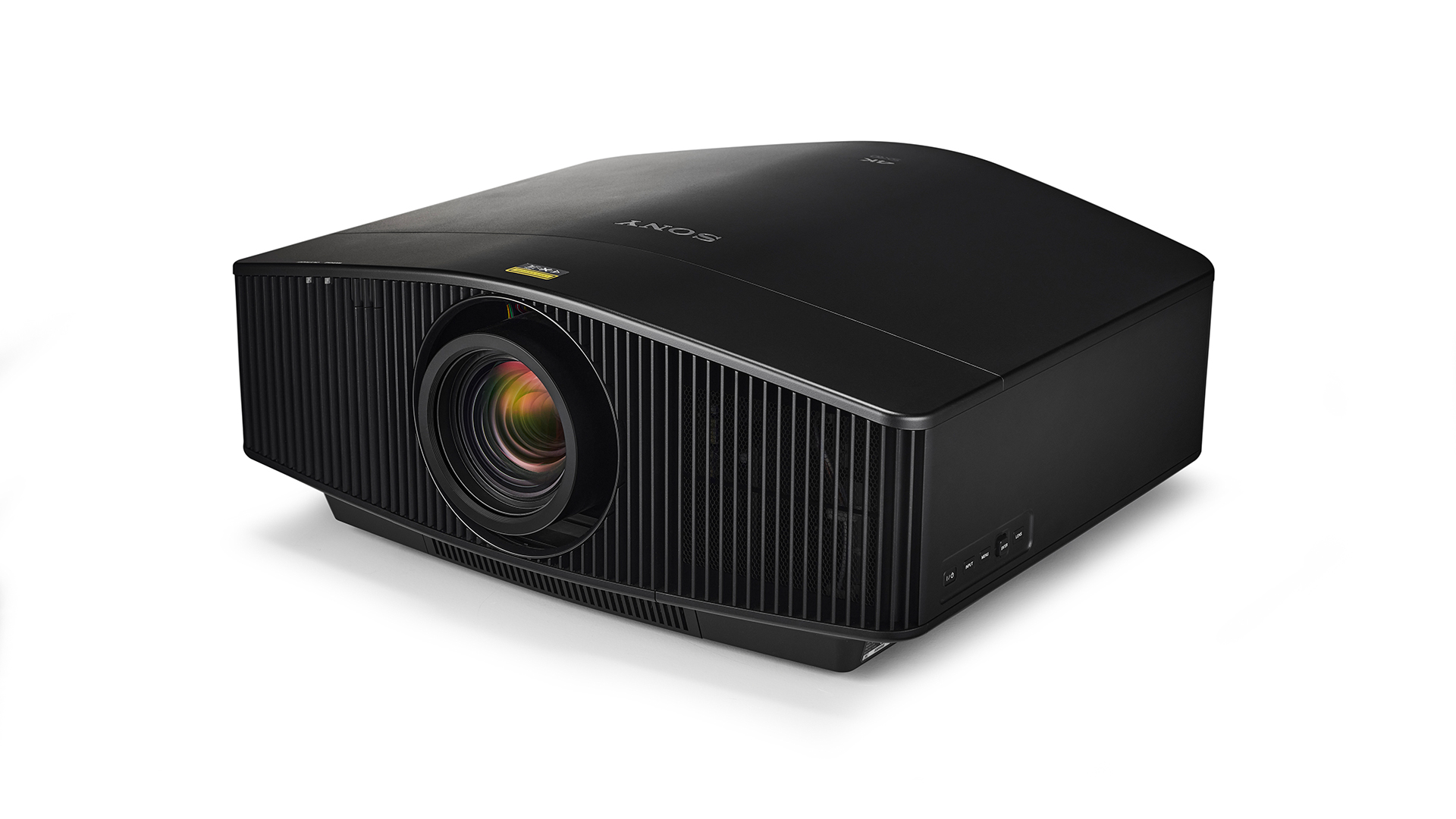
Processor X1 for Projector
Light source laser diode
Brightness 2200 lumens
Projector panels 0.74in x 3 SXRD
Resolution 4096 x 2160
Lens ARC-F lens, powered
Aspect ratio16:9, 2.35:1
Throw ratio 1.35:1 to 2.90:1
Max image size 300in
Lens shift ± 80% vertical, ± 31% horizontal
Inputs HDMI x 2, USB x 1
Dimensions (hwd) 22 x 56 x 50cm
Weight 22kg
Fan noise 24dB
3D built-in? Yes
That ARC-F lens itself is the other star of the show. While the step-down VPL-VW790ES does get a laser diode light source, it’s only the VW890ES, and VPL-GTZ380 above it, that benefit from the all-glass ARC-F.
Made up of 18 glass elements, the ARC-F lens (All Range Crisp Focus) is designed to optimise the colour convergence from the three SXRD panels for a pin-sharp and colour-accurate picture, and it does so with a throw ratio of 1.35:1 to 2.90:1, which can create a 100-inch image at a distance between 3m to 6m.
The ARC-F is interchangeable though, so for an additional (and quite hefty) fee, you can switch it for the VPLL-Z7008 short-focus zoom lens, with its throw ratio of 0.85-1.06:1. That cuts the projector-to-screen distance to under 2m for those working in a small space.
The focus, zoom and lens shift controls are all motorised and accessible from the remote. You can move the image plus or minus 80 per cent on the vertical and plus or minus 31 per cent horizontally. In real terms that makes for some very forgiving installation. So long as you can match the throw distance and find a solid mount, you shouldn’t struggle to line up the picture.
Picture
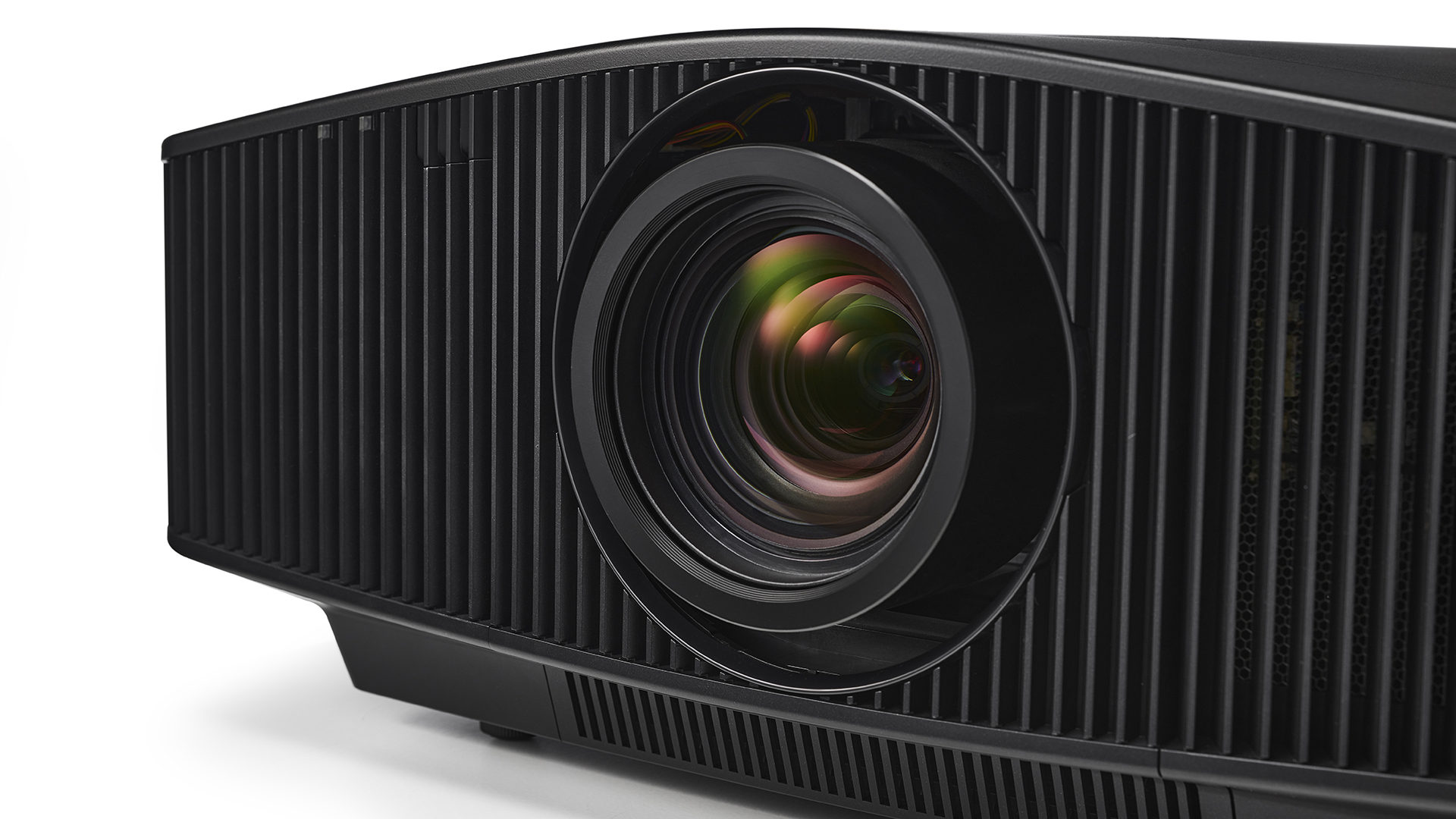
Sony has an excellent track record for resolution and colour with its SXRD projectors and the VW890ES has both in spades. This is one of the sharpest pictures we’ve ever seen – a corner-to-corner level of detail that’s simply breathtaking.
The opening moments of Blade Runner 2049 are mesmerising. The bare, grey, futuristic landscape of the protein farm is more natural and three-dimensional than we often see at this level. The contours of the ground passing beneath the Spinner are beautifully handled, breathing new life into a scene we’ve watched hundreds of times. With its whisper-quiet fan, the loudest sound in the room is our jaw hitting the floor.
The junkyard scene at the beginning of chapter eight is the one we keep coming back to, though. It’s as fine an example of contrast as one could hope to see. It makes the HDR handling of even top-end TVs look like a parlour trick. A punchy TV image highlights the rusty orange scrap and the bright white plastic against the greys of the mountains of wasted rubber and leaden sky. A quality projector, such as this one, allows us to see so much more in both colour and texture. Each discarded item has its own tone and weight. Even the mud and puddles become as fascinating as the other parts of the picture and it all adds a greater sense of poignancy to the narrative.
There are some easy choices to be made when it comes to calibration. As ever with Sony’s SXRD, the out-of-the-box settings are very credible. The main options between impact and subtlety come neatly packaged in the Cinema Film 1 and Cinema Film 2 presets, respectively. Reference mode is the one for purists with the most careful shading of all but at the expense of brightness and contrast.
To get the very best out of this projector, the place to tinker is with the Cinema Black Pro menu where you’ll find the controls for the laser output, the iris and the dynamic HDR enhancer, and the permutations of these three are largely what separate those presets above. The unfortunate truth, though, is that the trade-offs that they produce between picture brightness, dark detail and black depth don’t match the same excellence as the rest of the performance.
There’s just too much of a compromise in the darker scenes, such as those inside the San Diego orphanage. The most revealing presentations lack contrast. The more exciting versions are short in the shadows. We want the full black of the gloom in the bowels of the facility but we want to see what’s going on at the same time, and, even with its new picture processor, the VW890ES can’t offer both or indeed quite enough of either.
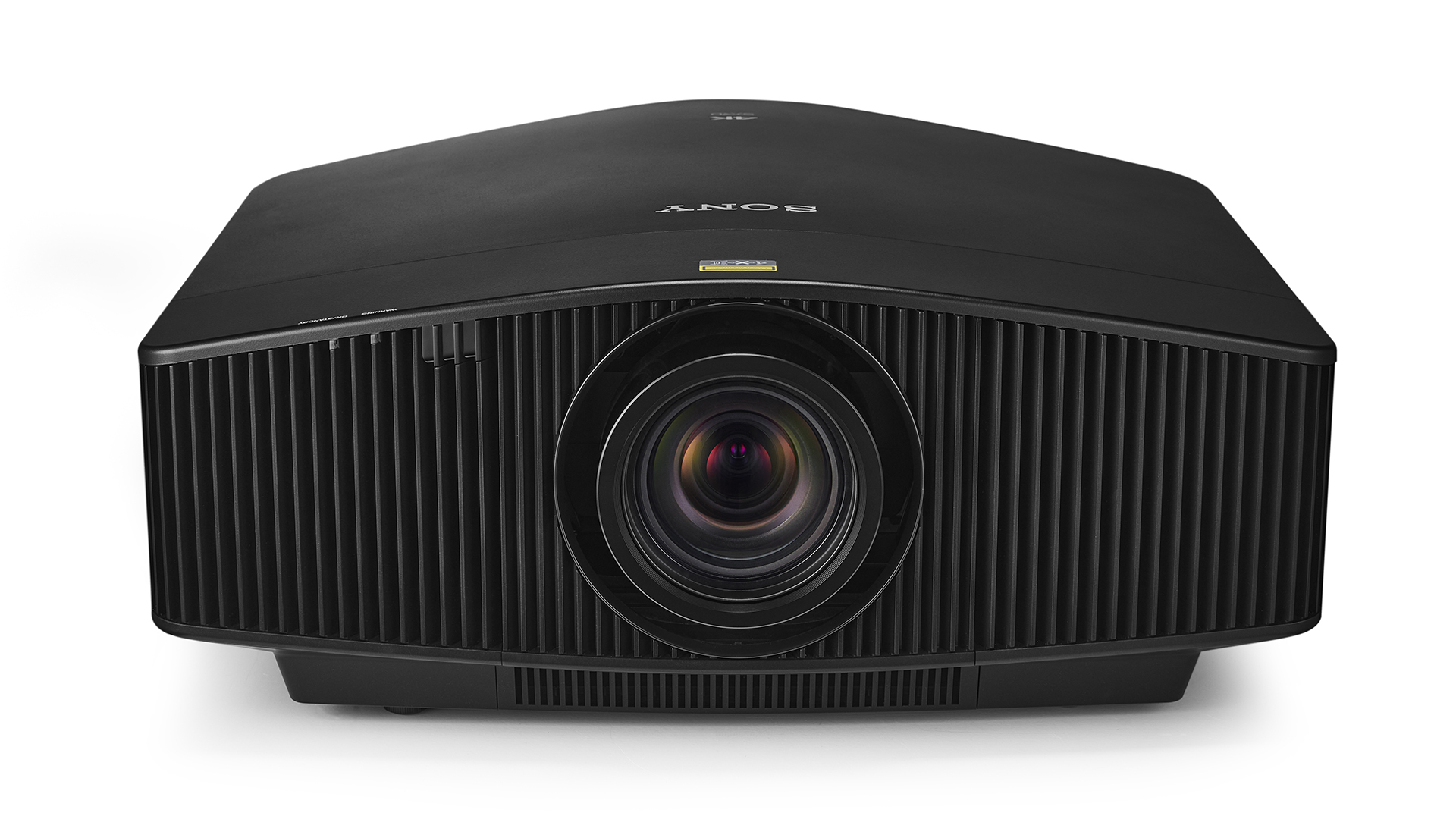
In every other aspect we really can’t fault this top-end machine. Motion processing is expectedly excellent. It is a Sony, after all, and the company’s Motionflow tech makes most of the different levels of smoothing really quite usable. Only the Smooth High setting is a little too much.
Upscaling is also nigh on perfect. Watching the first JJ Abrams Star Trek reboot is quite incredible. It’s hard to spot that it’s not 4K as we watch Captain Robau give out the orders on the bridge of the USS Kelvin. His skin detail is a little short of phenomenal given the resolution of the source material. His pores, stubble and sweat are incredibly sharp in close-up. Only a touch of noise reduction tech is needed to remove any hint of scaling artifacts.
Some stretching and zooming are required when watching SD footage. You may also need to set your player to output the right resolution first but these are very small adjustments for a kind of playback that we don’t imagine many will do that often. Even so, we’re perfectly happy to watch Face/Off on DVD during our tests. While not particularly detailed, it’s far easier going on the eye than with most devices.
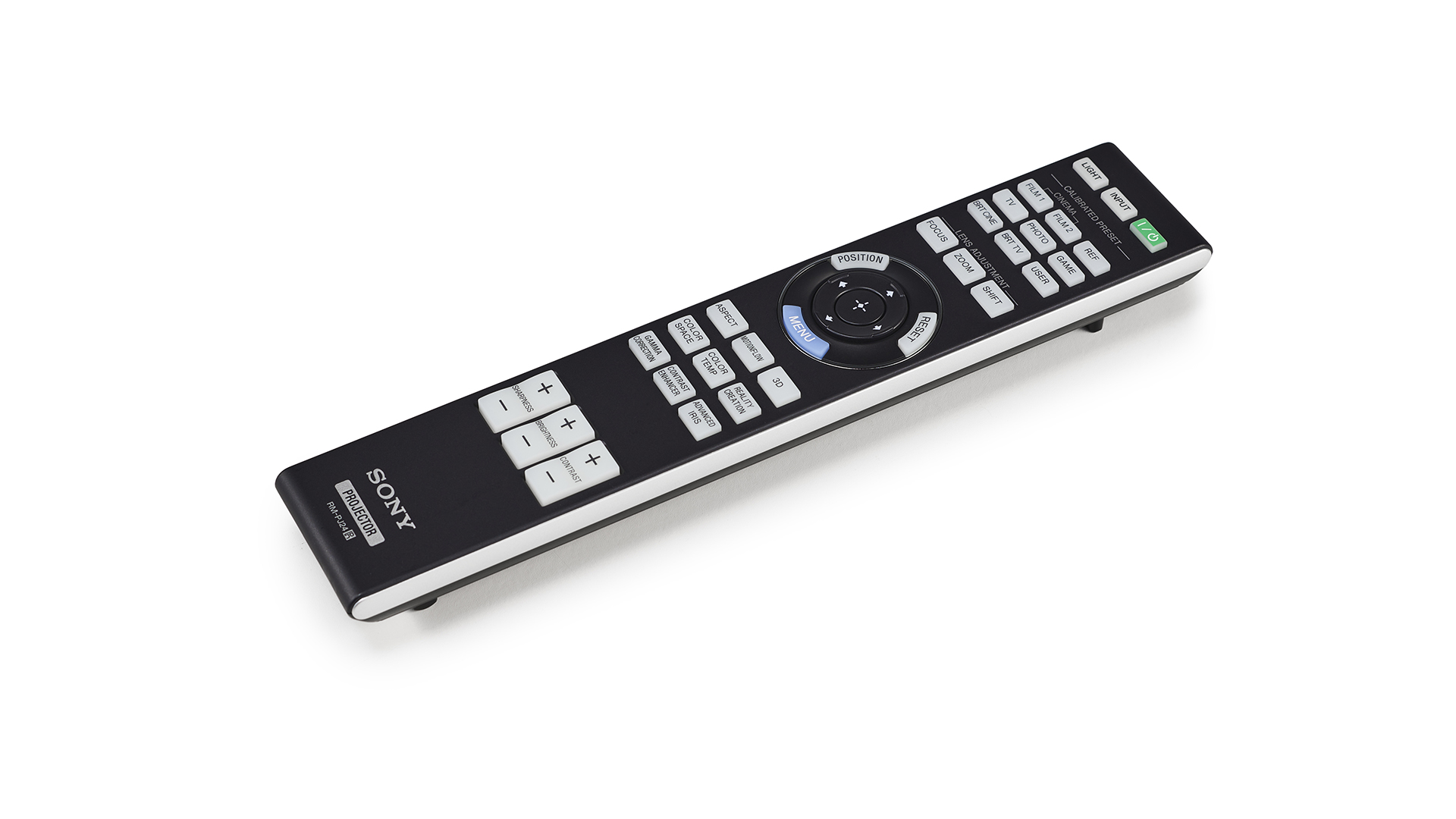
Verdict
Compared to the lower-end SXRD projectors in the 2021 Sony range, the VPL-VW890ES really is next level. It produces the kind of picture that will rival your local multiplex and have you wanting to watch disc after disc of your favourite films so that you can enjoy finding new details in them that you could never appreciate before.
At this big step-up in price, though, we would hope for better handling of tone. There should be a more satisfying midpoint between dark detail and black depth, and it’s disappointing that, despite the change in picture processor, there’s little improvement on this front compared to the last generation.
We hope that we’re not looking at the limits of Sony’s SXRD panel technology. This is a system that’s only a few short steps away from greatness.
SCORES
- Picture 4
- Features 5
- Build 5
MORE:
Read our review of the Sony VPL-VW590ES
Also consider the JVC DLA-N5
Read our thoughts on the Sony VPL-VW290ES
These are the best home cinema projectors
What Hi-Fi?, founded in 1976, is the world's leading independent guide to buying and owning hi-fi and home entertainment products. Our comprehensive tests help you buy the very best for your money, with our advice sections giving you step-by-step information on how to get even more from your music and movies. Everything is tested by our dedicated team of in-house reviewers in our custom-built test rooms in London, Reading and Bath. Our coveted five-star rating and Awards are recognised all over the world as the ultimate seal of approval, so you can buy with absolute confidence.

